Case Study: Best of Charleston ballot generates $170K
The Best of Charleston 2014 ballot was the biggest "Best Of" on all accounts in the 17 years they've done this campaign. Advertisers loved the new format of nominations and voting, especially the ones who wanted to be on the ballot but struggled with name recognition. The new format really opened the floodgates for engagement, revenue, excitement, sharing and promotion.
Background
Charleston City Paper, a part of Jones Street Publishers, is an alternative weekly newspaper located in Charleston, S.C.
The Idea
Charleston City Paper had run an annual Best of Charleston ballot for 17 years, and – in the past – the ballots have received an average of 10,000 votes. In 2014, the staff decided to switch it up and embrace a new, more robust platform to encourage even more engagement.
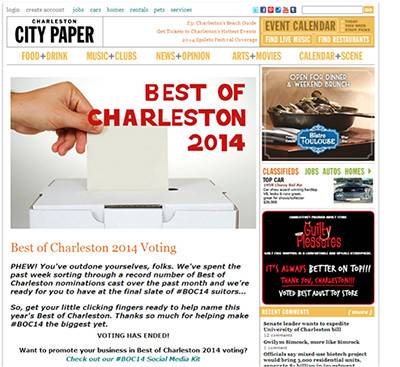 |
The Execution
In 2014, the paper added a nomination period to its annual Best of Charleston ballot. People could register for the ballot before voting began and fill in their nominations for 300 categories. Then, the paper took those results and created the official voting ballot by listing the previous year's winner and the top four nominees in each category.
The nomination period added an extra four weeks to the ballot, and meant that by the time they got to the official voting period, there was already a huge amount of buzz. Adding the nomination period really created a whole new level of excitement around the ballot.
Plus, the nomination period made the process of tabulating the ballot results much easier. In fact, it was so easy to administer the ballot – and they are receiving so many requests for additional categories – that they plan to run ballots year round!
In addition to banner and mobile ads, the paper sold category sponsorships for a flat fee during both the nomination and voting periods. These were such an easy sell that they sold out within a week!
They started promoting the ballot months in advance, and the promotional campaign included a mix of social media, print and online elements. You can see some of the tweets from the hashtag created for the ballot – #boc14 – and a few promotional Facebook posts below.
The paper also created a social media toolkit for merchants, to encourage nominees to promote the ballot on their own pages.
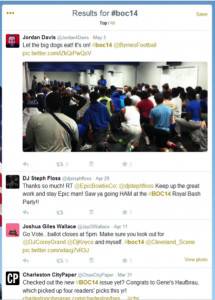 |
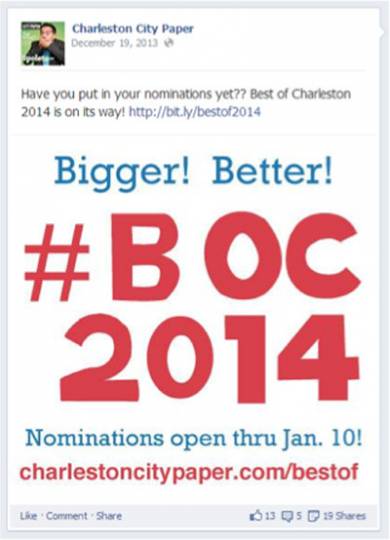 |
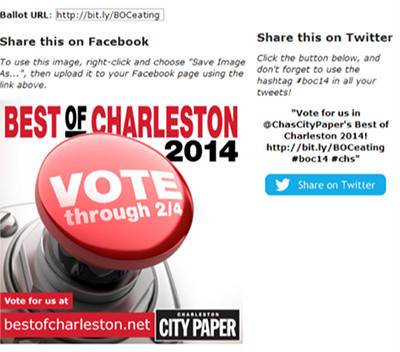 |
Once the ballot was over, they published a special section announcing the winners:
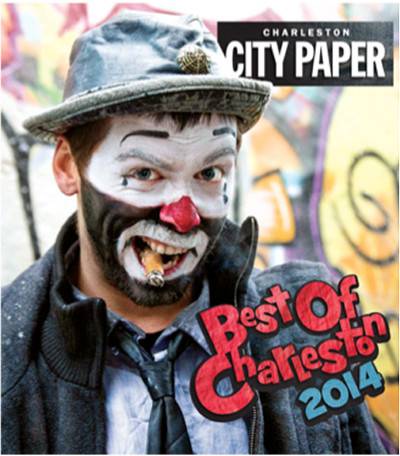 |
Charleston City Paper also capped off the ballot with a live event to celebrate. It was a private party for the sponsors, but even though it was invite-only, they still hosted a crowd of 1,500! While the current event, which is intended to be a thank you for customers and a congratulations for the winners, generated about $15,000 in revenue, the paper could monetize much more if they turned it into a public event. Check out a few photos from the event below!
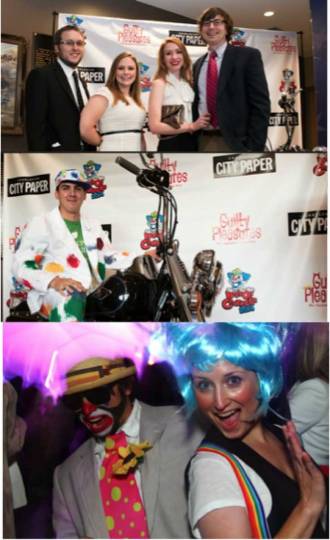 |
The Results
The 2014 Best of Charleston ballot generated $170,000 in revenue. Of this, $30,000 was from category ads on the digital ballot – and that's not including any banner ads or mobile ads! The paper thinks that the revenue number will be even higher next year, when they plan to add subcategory ads as well.
The ballot also received 900,000 votes from 20,000 registered voters. In a tri-county area of 600,000 people, these are incredible results! Furthermore, each person who registered to vote voted in an average of 45 categories (of 300 total). In the past, they had asked people to vote in at least 30 just to make sure the ballot was filled out, but when they dropped the requirement this year we saw a huge bump in participation.
Finally, in years past they have added between 3,000 and 5,000 new email addresses to our database. In 2014, the paper added 8,000 from opt-ins by new voters.
Matt Coen is the president and co-founder of Second Street, a leading provider of private-label online promotions platforms and partner success services for media companies based in St. Louis, Mo. He can be reached at (314) 880-4902 or matt@secondstreet.com.





